NEWARK, Calif. – There is an otherworldly quality to the Lucid Air. It’s low and wide with a streamlined front end free of the usual “face” of headlight units and radiator grille (be it real or not). The silhouette is unusual, especially at the rear, with its long wheelbase, truncated decklid, clamshell trunk and floating roof in silver. There’s something almost French about this American electric sedan – specifically, it’s hard not to think of the Citroen DS. Like that most Gallic of classic cars, the Lucid stands apart in stunning contrast to the cars around it – even here in Silicon Valley where Teslas and other futuristic EVs are commonplace.
And it doesn’t just stand out in terms of appearance, either. The Lucid Air is the sort of thing that you really need to dissect to fully appreciate how different it is and the level of work that went into it. Yes, the specs and driving experience of the Lucid Air are mighty impressive, but how it achieves them is even more so.
The company, based just across San Francisco Bay from various tech behemoths, has gone to great lengths to do as much in-house as possible, from its ingeniously packaged motors to the software in its 90 in-car computers (ECUs). It’s also an unusually boutique setup. The design and engineering teams aren’t just located in the same headquarters complex and the same building, they literally share a room (pictured below). The engineers’ computers are located on a mezzanine within and overlooking the design studio where mockups are created physically and virtually. Just down a hall is an expansive workshop filled with lifts and prototypes, while offices for executives, software engineers and even public relations exist within the same complex. Comparable elements of other carmakers would not only be typically spread amongst separate buildings, they’re often spread across states, countries and even continents. That speaks to the potential benefits of organizational efficiency and synergy as much as it does maximizing real estate and, well, being a rather small startup company.
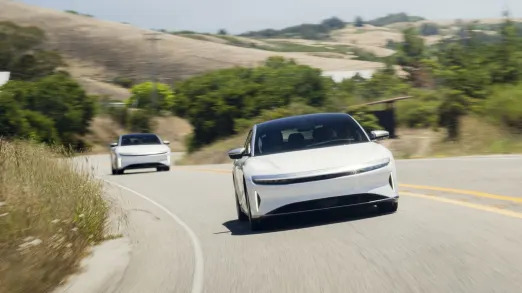


Small yes, but also very well financed. When you take a look at the componentry created in-house for the Lucid Air, compare it to that of rival EVs, and hear chief engineer Erik Bach describe it all, you don’t have to be an accountant to work out that corners weren’t cut for the sake of budget. The best example of this is Lucid’s motor unit (below right), which produces a whopping 670 horsepower and weighs 163 pounds. When viewed next to several less powerful and heavier motor units (including Tesla’s otherwise impressive unit), it quite obviously takes up less space.
Part of the packaging trick is its micro differential (below left) that fits inside what would normally be empty space within the electric rotor. It’s a beautiful little piece, with intricate gears fit together to create a quasi-sphere with shafts that rotate out of two ends. It looks designed, not engineered, like something created by a sci-fi prop department rather than car engineers. The motor’s stator is similarly as much a work of art as it is a piece of machinery, with wires continuously weaved together in a beautiful lattice reminiscent of the buildings created by mid-century architect Minoru Yamasaki.
None of this was done for beauty, however – remember, these pieces are ensconced within a motor housing never to be seen. Their elegance speaks to their engineering and efficiency – of space, in output and of the resources needed to construct them. According to chief engineer Erik Bach (pictured below), the stator’s continuous weave winding that creates that lattice pattern requires a fraction of the laser welding other stators require and therefore a fraction of the energy needed to produce it.
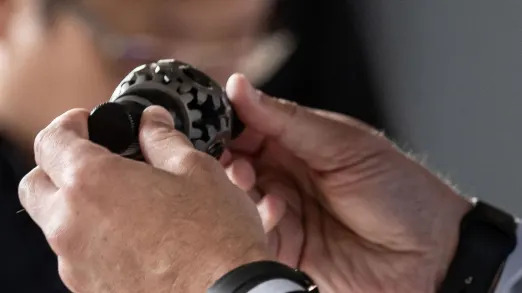
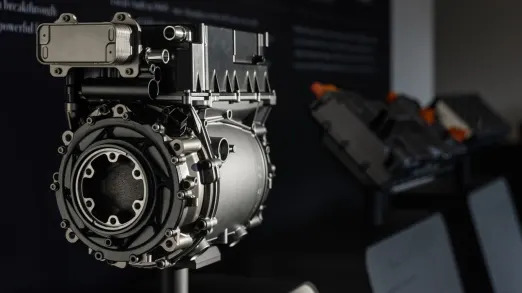
Oh, and the end result is an incredibly energy dense piece of equipment. The motors in the Air Grand Touring produce 819 hp and 885 pound-feet of torque, while the new Grand Touring Performance that’s mechanically analogous to the limited-run Dream Edition, boasts an absurd 1,050 hp and 921 lb-ft of torque.
Of course, a key component of all that thrust is the Lucid battery pack array. Each pack is much smaller than those found in a Tesla. That means each holds less energy, but Bach indicates there are packaging, cooling and strength benefits of smaller packs. The cylindrical battery cells are grouped together and placed atop a metal cooling plate through which a water/glycol mixture cycles (Tesla snakes coolant around the sides of its cylindrical cells, which Bach says is less effective, like trying to cool someone wrapped in a Persian rug from the sides as opposed to the open top). This plate, along with the pack’s smaller size and the single piece of molded plastic housing it all, makes for an extremely strong unit, which is beneficial for crashworthiness.
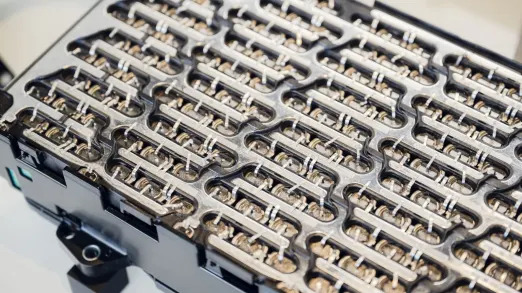

There are 22 of those packs in the Lucid Air Grand Touring and Grand Touring Performance, resulting in a bladder-busting range of 516 miles in the GT with 19-inch wheels, 469 in a GT with 21’s, and 446 for the Performance. The Air Pure and Touring trims have 18 packs, and, indeed, the Air was originally only intended to have 18. You see, those four extra packs in the GT models fit exactly within a gap in the overall battery array that was left to allow for the back seat footwell. Filling that gap with the extra packs raises that footwell by 2 to 3 inches, significantly reducing passenger comfort by bringing your feet closer to the level of your butt. It’s a bit like sitting in an SUV’s third row, albeit with a ton more space behind the front seats.
This is obviously a trade-off, and one that buyers should seriously consider, but there’s a clear advantage that Bach’s team realized.
“We can kill range anxiety,” he said, and topping the 500-mile threshold would sure seem to do that.

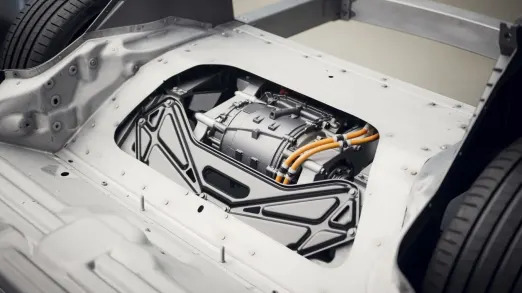
Now, having a massive amount of battery capacity is nice, but recharging the thing is a rather key ingredient too. Enter the Wunderbox (pictured above left). In the simplest terms, it’s the onboard charger. It sucks in electricity from a plug and deposits it into the battery. However, its 900-volt architecture allows for some mighty suction with a maximum DC fast-charging speed of 300 kilowatts (that’s better than the 270 kW of the 800-volt Porsche Taycan). At a 350-kW DC fast charger, the Air can theoretically recoup 300 miles in 21 minutes.
At the same time, the Wunderbox makes the Air capable of “bi-directional charging,” whereby it can power your house at a rate of 19.2 kilowatts of AC. You can also charge another electric car – the bag containing the surprisingly compact charge cord includes plug attachments for 120 volts and 240 volts, plus the car charging “gun” as Bach perfectly referred to the thing. These aren’t unique talents, but they are rare, with the Hyundai Ioniq 5, Kia EV6 and Ford F-150 Lightning being the few with similar capabilities (though none match the output of the Air).

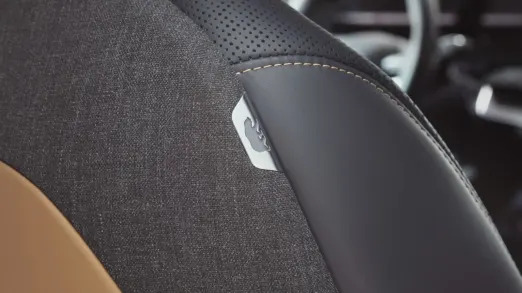
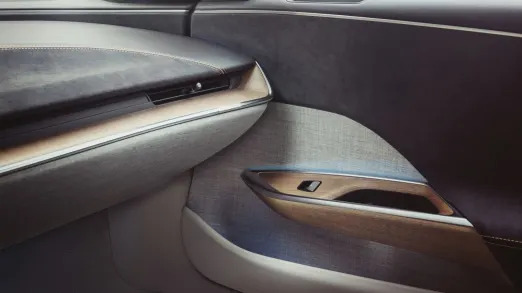
The interior gets plenty of attention, too. While it’s historically been commonplace for small and/or startup companies to rely upon third parties for things like interior switches, door handles and even infotainments system, once again, Lucid kept things in-house. The buttons and switches, which are few in number but do exist, look suitably expensive and move accordingly. The little barrel rollers on the fat, two-spoke steering wheel are particularly lovely. The leather, faux suede and open pore wood covering most surfaces are top-notch stuff; the textile fabric featured in two of the four interior color schemes is made from alpaca yarn, and definitely shows that there’s a lot more than just cow skin available to make a car’s interior look and feel expensive. Quite simply, the interior is the real deal.
Then there are the bespoke 1s and 0s. As previously mentioned, there are 90 computers in the car that control everything, with 70 of them capable of over-the-air updates. The exceptions are for things like lowering the windows. Most were also developed in-house by Lucid, and according to chief software guru and longtime Apple vet Mike Bell (pictured below left), his team aims to bring even more of the units in-house in the future.
“Being in the valley, it’s just not a big deal for us to do that,” Bell said, though he notes that a contract manufacturer actually builds the units.

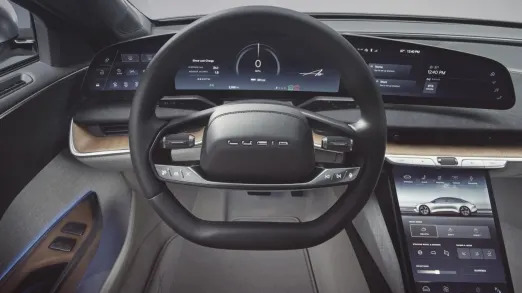
Bell was also a key figure in terms of determining how one interacts with all that updatable software. The Air has three touchscreens, plus a display for the instruments and key driving-related information. When asked about the one-screen-does-all approach of Tesla and Rivian, he posited that it’s certainly an approach that saves money, but noted that he did not like having to constantly look over to see his speed and other frequently needed info.
“I want to have the key bits of information right in front of me,” he said, focusing his hands forward toward an imaginary instrument panel. And despite having a 34-inch arc of displays in 5K resolution and a second large touchscreen below, he’s not wrong in saying that the Air’s screen setup is less overwhelming than the Mercedes EQS Hyperscreen with its three huge screens behind a vast piece of glass accented by an infinite array of interior colors.
“We’re not building a night club,” he mused.
And indeed, there’s something awfully familiar about the Lucid Air interior. The touchscreens may have replaced most buttons, but they are located roughly where those buttons used to be. You also don’t need to hunt deep into menus, or wade through an immense amount of choice and customization. Basically, Lucid makes decisions in terms of layout and how things work based on its experience, research, intuition, customer feedback and just using the damn thing. That extends to driving modes, by the way. With OTA updates, however, it can always switch things up if something isn’t working, isn’t working as well as it should, or people just don’t like it.

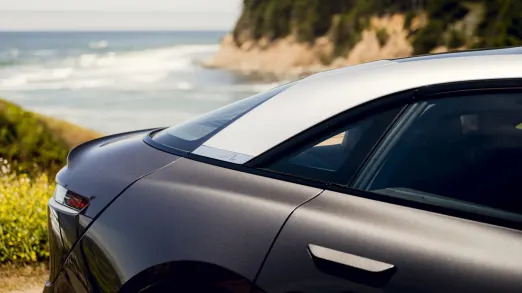
To that point, Lucid is about to push out an update that corrected two points of frustration experienced during our first drive of the car. The infotainment screen’s docked menu icons were located on the right side of the screen, which looked tidy, but meant the buttons are miles away from the driver. They’re being relocated to the left side. The other issue was related to the navigation system directions: the bit that graphically shows you the directional arrows of your next turn along with the street name and lane suggestions would frequently be covered up by a search menu element (or not be shown at all if you have the audio screen up). Now those directional elements show up in the instrument display.
Of course, OTA updates certainly aren’t unique to Lucid – they’ve been a key strength and point of differentiation for Tesla. They’re an absolute game-changer, and Bell says that his team will do its best to make sure customer cars are still supported as they get older, noting quite correctly that a $179,000 car is extremely different than an iPhone. Planned obsolescence just would not be cool.
But the Lucid Air is most definitely cool, and not just because it looks cool or in saying you drive something with 1,050 hp is cool. It’s cool in the same way as a high-end watch: those in the know will recognize you have something that’s been engineered and crafted to a special degree. And if it’s not clear enough, perhaps Lucid should throw in an extra micro differential just as a visual aid. Man, that little thing is cool.
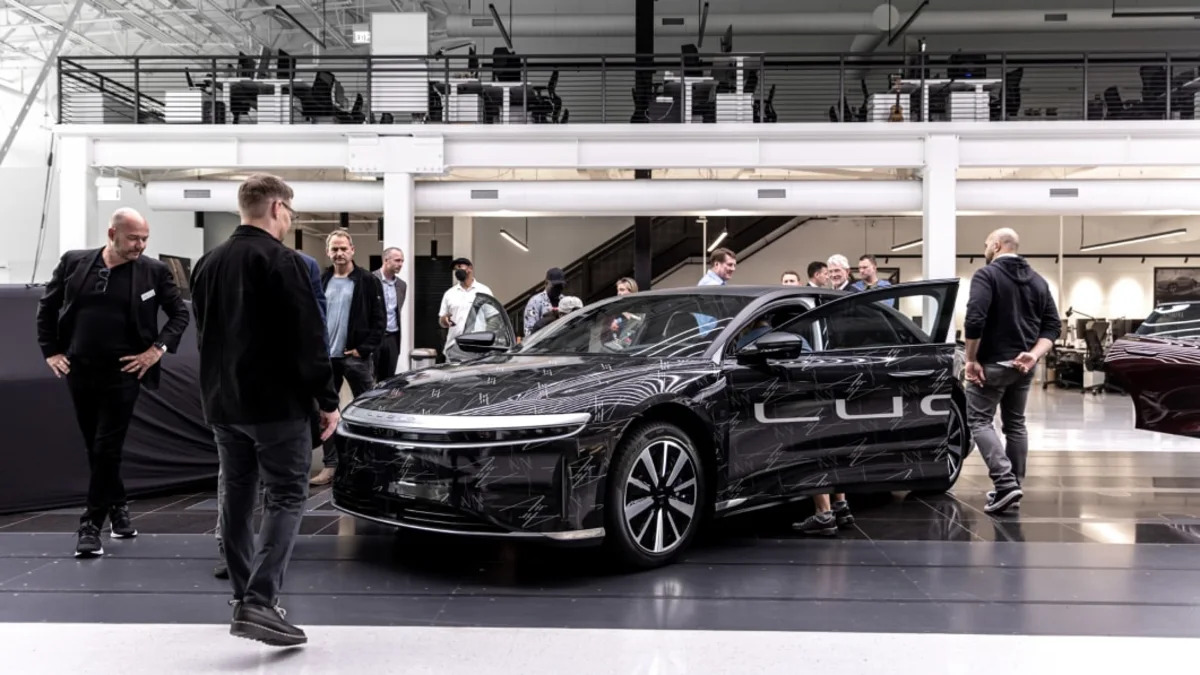

Sign in to post
Please sign in to leave a comment.
Continue